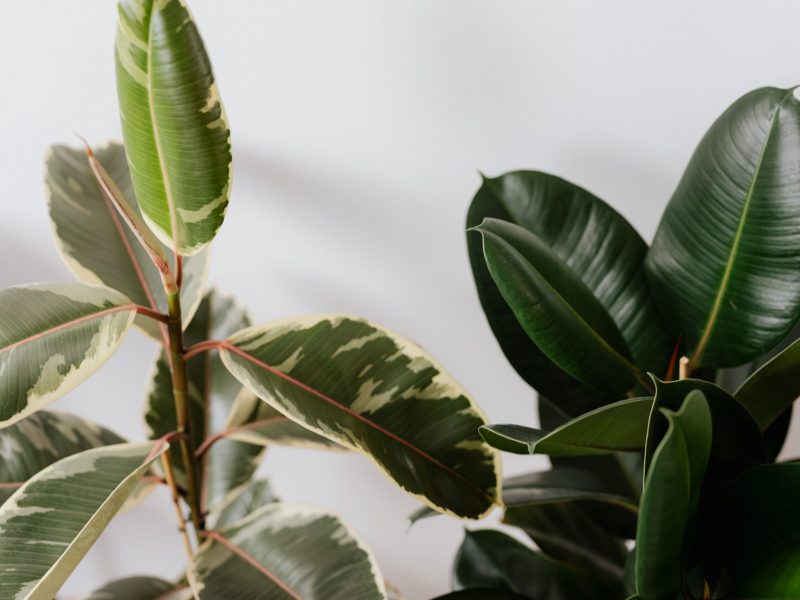
Rubber plants are known to be one of the easiest houseplants to take care of as they aren’t as sensitive to their environments as some others. However, this isn’t to say that your Rubber Plant won’t struggle at times if it’s environment doesn’t suit it, so it’s important to look out for the warning signs and treat them as soon as possible to prevent your rubber plant from dying.
The main reasons why your rubber plant might be dying are a change in light conditions, over or underwatering, dry air and pests.
Not enough sunlight might be why your plant is dying
Rubber plants love the sunshine and can struggle to survive without it. They don’t like dark areas of your home and a lack of light will slowly start to mean your plant is having to lose some of its leaves to reserve the energy to keep some alive still. If you have recently moved your rubber plant into a low-light area, or find that it is struggling over the darker winter months, it may simply be that it just requires more light. Try to place your rubber plant near a window but avoid too much direct light as this will scorch the leaves in summer.
Overwatering can be harmful to a Rubber Plant
This will kill your plant quicker than underwatering, as rubber plants hate sitting in water. If you have overwatered your plant it can very suddenly lead to root rot, meaning the plant becomes unstable and also cannot get needed nutrients from its root system. Root rot is one of the biggest killers of houseplants and must be treated immediately.
If the bottom leaves of your rubber plant are turning yellow or brown, this is a sign that you are overwatering. Check the soil moisture and adjust watering accordingly. If you find that the soil is water-logged, replace the potting soil straight away (rather than waiting for it to naturally dry out) so that the roots can begin to recover.
Underwatering can cause your plant to die
Too little water can also mean your Rubber Plant starts to die so it is important to keep an eye on how dry the soil is and for how long. If you find the leaves are going brown and dry at the tips, this is usually caused by underwatering. Make sure to regularly water your rubber plant, a little and often to make sure that the soil is always slightly damp. Rubber plants don’t like to be swimming in water, but they don’t like to have dry soil for too long either.
Dry air might be why your Rubber Plant is dying
Rubber plants like quite humid environments and can struggle in homes with dry air, which may be one of the reasons why your Rubber Plant is dying. This can be especially damaging in winter months when we often have the heating on for several hours a day. A lack of humidity in the air can cause leaves to dry and fall off. If you feel you have quite dry air, make sure to mist your rubber plant every few days and this should help prevent the plant from drying out.
Rubber Plants are sensitive to drafts
As well as dry air, Rubber Plants are also quite sensitive to drafts. They really dislike cold air so make sure that it is not placed near doors or windows that may be drafty. Even though the temperature of your home may be perfect for your rubber plant, the drafts coming in from outside may be colder and harm your plant’s health.
Rubber plants aren’t that fussy when it comes to their environment, so the majority of these problems are easy to fix. Your Rubber Plant won’t die on you suddenly and it will tend to give you enough warning if it is unhappy at all in its environment. Make sure you check on your rubber plant every now and again to spot any changes in their leaves as catching the warning signs early will help you prevent it from dying. One simple thing to make sure of is that your watering schedule is regular. If you follow the basic care guide for your rubber plant then it should be quite happy.














